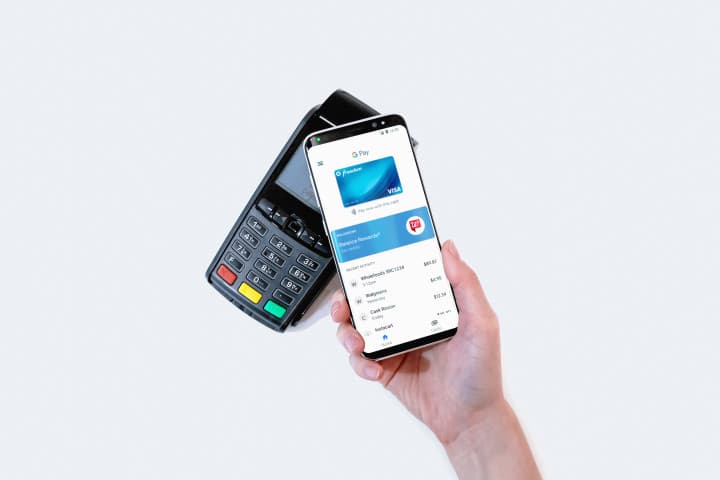A finance charge is the fee that a lending company charges for lending money to an individual. It can either be high or low and sometimes not included in monthly loan payments.
Finance charges include many loans, such as car loans, mortgages, and credit card loans. Knowing how to find your finance charge is essential, along with how to calculate your finance charge. There are different methods how to calculate the finance charge as well. This can affect the total cost of the finance charge.
Below, we will cover some common calculations for finance charges to figure out yours, along with some background information to build your understanding of finance charges and how they work.
What is a Finance Charge?
A Finance Charge is the fee that a lending company charges for giving money. It can be described as a service charge or selling cost, and it will always be added to your loan or bill before you pay it. These types of fees are usually not included with monthly payments but are in addition to the regular payment amount.
- A Finance Charge can also be known as Payment Premium, Loan Cost, Lending Fee, Money Service, Selling Cost, or Servicing Fee.
Finance charges are typically calculated based on an interest rate set by the Federal Reserve along with other methods such as actuarial tables or flat fees. You might hear these terms used interchangeably when talking about finance charges. While they all mean similar things, there can be differences between them.
Are Finance Charges Considered Predatory Lending?
Generally, finance charges are not considered predatory lending, but it can be challenging to know when you are being taken advantage of by high costs. One scenario will be if you get a pre-approval for a car loan when you have bad credit, you may have high finance charges on your loan.
If your finance charge is consistently higher than a given industry average, or if your loan has many fees that add up quickly, it may be time to question what is going on with your finances.
For example, fines for late-payments and over limits, renewal penalties, and other similar fees will all increase the cost of paying off the debt in an overall sense, so they should always be avoided.
Why Are Finance Charges Important?
Finance charges are important because they can significantly affect the cost of large loans. The amount and type of the finance charge is usually shown as a percentage on your loan, such as 5% or 8%.
Finance charges are typically not included in monthly payments called nominal rates.
They have to be paid outside of the regular payment plan. However, some finance charges may be added to the loan or bill amounts and adjusted for inflation by indexing with interest rates.
This allows them to earn extra money from interest earned and inflation while also reducing their borrowing costs over time. They also impact the ratio of proportion of loan balances to loan amounts is too high by increasing balances.
Finance Charge Calculation Methods

There are five primary methods that most companies use to calculate their finance charges:
- Actuarial Tables
- IRR (Initial Rate of Return)
- Amortization
- Hybrid Method
- Fixed-Rate
ACTUARIAL TABLES
These are the most commonly used calculation methods for finance charges. The tables are divided into four categories: fixed rates, varied payments, different time scales, and flat fees.
- Fixed-Rate Table: This table is used to calculate finance charges based on revolving credit or installment loans. It can be adjusted to cover all types of transactions, including bad debt and overpayments, in addition to good standard transactions. It is always wise to know the difference between outstanding balance vs. principal balance. Under this method, the loan’s balance is calculated by subtracting any unpaid balances from its total value at a given interest rate and payment period. These values are then multiplied together to determine the amount paid each period and the remaining amount after that period ends.
- Varied Payments: A varied payments table is used for installment loans or revolving credit with loan terms between 13-60 months in length. The term is based on the original credit agreement’s scheduled dates of payments and their amounts to repay the loan.
- Time Scales: This table is used for open-end loans, which may vary their payments after the first year of repayment. It works similar to the varied payment method, but this table focuses on a source interest rate and an annual percentage rate (APR).
- Flat Fees: These tables are based on flat fees only, and they are usually used in conjunction with other methods to help calculate finance charges more accurately. Flat fees cover everything from credit card purchases to overdrafts.
IRR’s
For installment loans that are paid off over a period of at least one year, the IRR method is used to determine finance charges. The interest rate for the loan being charged is determined by adding up all payments and dividing them by the total amount borrowed.
This is known as an APR, which stands for annual percentage rate. The term “annual” refers back to paying it off in just one year.
Technically, this happens with every installment type loan including a revolving credit facility, even if the loans are not paid off in one payment cycle. This means you could take money out of your account on day one and be done with it within 365 days, or you can make 12 monthly payments equaling $50 (a month) each while keeping the same results, only less work.
Amortization Method
This is based on the principle of amortization which is the process in which a loan’s balance is reduced with each cycle. This is the same process for getting a mortgage loan with this method. The APR under this method is calculated by adding up all of your payments for one year and dividing them by 12 to reach an average monthly payment amount.
This average is then multiplied by either 30 or 60 (depending on the length of the repayment term) to reach the total number of payments required to pay off your debt.
The Numerator: Total interest paid over time = Finance charged
The Denominator: Principal x Number of periods = Interest charged
Hybrid Method
Hybrid methods combine two or more of the three methods listed above to calculate finance charges. These methods are typically used when installment loans go over 60 months and also for revolving credit with a term shorter than 12-months.
FIXED-RATE FINANCE CHARGES
Finance companies claim that fixed-rate finance charges help consumers know their daily rates throughout their loan repayment period. This method is helpful for businesses (some income share agreements operate this way) and individuals who want to have a consistent number instead of one they can’t rely on.
- Fixed-rate charges are a good choice for those who want to know exactly how much they will pay every month or even every week since there won’t be any surprises at the end of the loan period.
- Their rates are based on 4-5 different factors depending on the company, including your credit score, employment status, and income level, but it mostly comes down to what kind of loan you apply for.
To find out your fixed-rate finance charge, simply take this formula:
Original Principal x Daily Finance Rate = Fixed Finance Charge
The “daily” means that this is a one-day rate and will be in effect until you make another payment. This is usually used when you’re being charged monthly so that your daily interest can be more easily calculated.
How to Find Finance Charge with Average Daily Balance
To find your fixed-rate finance charge with the average daily balance method, you must know four things:
- How many days in the billing cycle
- APR rate
- What the average daily balance is for that cycle (this is where you’ll find your finance charge if you know this number)
- Number of days in the year (365 or 366 if leap year)
FIXED-RATE FINANCE CHARGES CALCULATOR:
STEP 1: Find your average daily balance.
STEP 2: Take that number, multiply it by your annual percentage rate (be sure to convert your APR into a decimal).
STEP 3: Next, times it by the number of days in your billing cycle (either 30 or 31).
STEP 4: Finally, divide your number by 365 days (or 366 days if a leap year) to get the daily finance charge.

Fixed-Rate Finance Charge Example
How to calculate your fixed-rate finance charge with average daily balance:
Let’s say your average daily balance has been $1,250 and your APR is 7%
STEP 1: Your average daily balance is $1,250.
STEP 2: Multiply $1,250 x .07 = $87.50
STEP 3: Multiply $87.50 x 30 = $2675.00
STEP 4: Divide $2625 by 365 (or 366 if it’s a leap year) to find your daily finance charge of .24 per day, which equates to $7.19 per month and is your fixed-rate finance charge.
STEP 5: Type in a new balance, daily rate, billing cycle and calculate it out as often as you’d like.
That is how to figure out fixed-rate financing charges based off of your average daily balance.
How to Find Your Finance Charge on a Credit Card
For a finance charge on a credit card, you have to consider that the amount of your balance may change between billing cycles.

For this reason, the finance charge is calculated daily and then divided by the number of days in the billing cycle:
(New Balance) X (Daily Interest Rate) x (Days In Monthly Billing Cycle) = Total Finance Charge
A little bit of math is involved in finding out precisely what your finance charge will be ahead of time.
- You will need to figure out how many days there are in each billing cycle along with your average daily balance (which can easily be found on your statement).
- You will also need to know the APR the credit card company is charging.
- Once you know both these pieces of information, dividing it by 365 or 366 gives you an idea of what percentage interest rate you are paying.
- It will not be exact, but it should be fairly close to your actual percentage finance charge.
An easy example to help you understand how this is done:
Let’s say you have an average daily balance of $2,700, your APR is 21%, and it takes 30 days to complete each billing cycle.
To figure out your finance charge on a credit card account and how this is calculated, you will need to do some math. We need to break down the APR rate into a daily interest rate. The formula that represents this is:
APR / 365
21% / 365 = .057% daily interest rate
- Your finance charge will be calculated as follows:
(Average Daily Balance) X ((Daily Interest Rate) x (Days In Monthly Billing Cycle)) = Total Finance Charge
$2,700 X (0.057 x 30) = $46.17
This means that your total finance charge for the month will be 0.057% (6.3%) per day or 1.71% per billing cycle. Your total finance charge per billing statement would be $46.17.
Many consumers wonder will canceling a credit card stop recurring payments to avoid paying finance charges.
What is a Finance Charge on a Car Loan?
A finance charge on a car loan is the interest you pay over and above what you borrow. A finance charge typically includes your down payment and any other fees associated with obtaining financing for the consumer purchasing a new or used vehicle. Look into what credit score is needed to buy a car at Carmax if you are concerned about finance charges.
- On an auto loan, for example, if the lender offers four different rates: 5%, 6%, 7%, & 8%, it’s possible that you could borrow money at 5.5% by putting more money down (thus lowering your overall cost), but still, be charged interest at 6%. This is because there would still be additional charges, in interest, to cover the cost of processing your loan.
Some of those extra costs for financing a car loan would include origination fees or the amount you pay to get the loan. Other costs could also be included in finance charges, including document fees, dealership prep fees, car delivery fees, and more.
If you’re planning on financing a car purchase from a private seller rather than through a dealership, make sure that you know what rate they are charging you as well as any fees.
How to Find Finance Charge on a Car Loan
To calculate the finance charge on a car loan, first determine the APR (annual percentage rate) for your car loan. Then add the down payment for your car, any other fees you may have incurred, and the amount of interest that will accrue between the date you take out the loan and when you pay off the balance in full.

To calculate the finance charge on a car loan:
- Calculate APR: Divide the amount financed (the principal) by the loan amount (principal + interest).
- Add down payment: The initial cash investment made to acquire an asset, also known as “money down.” To add to $5,000 borrowed at a 6 percent APR, divide $500 by 6% = $83.33 per month. Multiply this figure by the number of months left in term = $833.33 total added to $5,000.
- Add other fees: The costs of obtaining the loan include an appraisal fee of $250 and an origination fee of $75.00 = total fees = $325.00 (8% of a $26,500 car). To add to $5,000 borrowed at a 6 percent APR, divide $325 by 6% =$50.83 per month. Multiply this figure by number of months left in term = $508.33 total added to the original amount borrowed ($5,000 + $833.33) for a total of $6,338.33.
- Add interest: Divide the monthly payment by 12 to find how much interest you are paying each year; then multiply that by the number of years you’re financing. In this example, divide $495.83 by 12 =$41.25 per month x 60 months =$2,217 in interest. To find amount financed, subtract total fees from opening balance ($5,000 – $833.33 – $508.33 – $6338.33)/(1+0/12) = $3,033
Can I Avoid Finance Charges on a Car Loan?
In a perfect world, you might love to avoid paying anything extra for your car. Believe it or not, there may be ways that you can reduce any finance charges on your auto loan.
How to Avoid Finance Charges on a Car Loan:
Negotiate the price of the vehicle
Negotiate the overall cost of the vehicle so you pay less for it overall.
Shop around for a better APR from other lenders
Check online or call local banks and credit unions. They may have special rates available to members (open accounts), veterans, or simply customers with long track records of good credit history.
Fees are often negotiable because they need borrowers’ business; all in a competitive market where loans are dispensed like other products such as checking accounts, CDs, and savings accounts. Bottom line, if you are looking for the best APR and fees on your car loan, ask around.
Try to get a lower rate APR by putting more money down
For example, instead of getting an auto loan at 7% with $500 down at repayment, try $1,000 or even $2,000 down. This can reduce overall interest costs dramatically because part of what is charged as a finance charge is used to pay back the lender’s return on investment in a higher-priced vehicle, or a consumer puts little money down.
Pay off your balance faster
This will also lower the finance charge despite having what could be considered a higher interest rate. The quicker you pay off debt (whether it’s from a credit card or a car loan), the faster you save on finance charges.
Use your bank’s pre-approved rate for financing a car
Banks often keep credit lines available to their customers, and if an amount is set aside in advance by the customer, that can be used as collateral against the loan. This means the lender has no risk if you do not qualify for the total amount when you go through with the auto purchase. The good news is that interest rates are typically lower than what might be found at other dealerships or small lenders between parties.
If you’re leasing a vehicle, check out dealers directly
Look into other dealer options such as Carmax’s financing options to learn what your monthly payments will be upfront. You may negotiate this charge or seek out different dealerships to conduct business with once you know. Don’t wonder should you get a Carmax pre-approval or not.
FAQs
Are there limits on finance charges?
There have been attempts to limit finance charge (interest) charges on loans. Buyers need to be aware that state and federal laws govern specific limits for commercial transactions between businesses like dealerships. In a private-party sale, payment cap laws do not apply when you buy a car from an individual seller instead of a dealership.
What’s APR?
APR stands for annual percentage rate and is the interest rate charged on your loan plus any fees associated with it. The six primary factors are: 1) How much money you borrow; 2) The length of your loan; 3) Your initial down payment, if any, 4) Any points or other fees charged by the lender or creditor; 5) The interest rate itself and 6) Type of loan.
What’s the difference between APR and finance charges?
Finance charges are based on APR, which is expressed as a yearly rate. However, finance charges aren’t just interest rates paid over time – they also include other fees associated with your loans, such as origination fees, document fees, and more.
Conclusion
If you’re looking to find your finance charge, a few methods can help you. The average daily balance method takes the total amount of money owed each day and then divides it by 365 days to get an accurate picture of how much is due every single day.
Using the daily balance method mentioned above, you can also calculate your finance charge on credit card bills, auto loan bills, or mortgages. You can combine these methods with using a personal balance sheet to calculate net worth as well. The best way to find your finance charge is by negotiating for lower prices when you buy a car and taking out loans with better interest rates.



